The latest Ascent Backcountry Snow Journal is now available online and at a local gear shop near you (maybe).
I decided to stick to story-telling in this issue instead of getting folks all bent out of shape with any more ranting and ravings. 😉
I haven’t written much about Baffin Island because it was pre-blog. And although it happened ten years ago, I felt like revisiting one of my first expeditions and sharing some of the stories from the most incredible place I’ve ever been on skis.
It took a whole week of traveling for us to truly get away from this so-called “civilization.” It had been a blur of flights, hotels and shuttle buses, and then a mechanical issue on our plane kept us on the ground in Iqaluit, the capital of Nunavut, for 3 days. It wasn’t until the snowmobiles disappeared back to Clyde River, leaving us standing in our down suits with three weeks of food and gear, that it really sunk in how remote this place was. None of this felt like any part of Canada I’d ever been to.
If you’ve never been to Baffin Island, then you might not be able to imagine the landscape. I’m not sure my small words will help you get the picture either. There are very few places on this planet to reference it to. Referencing is a handy tool we use as humans to refer one thing to another and by way of association, gain understanding. I’m not sure that works in this case. You could say Baffin Island is like a frozen Yosemite, but it’s not, it’s much bigger and grander. Grand! Yeah, maybe the Grand Canyon rivals it in ability to overwhelm the senses. Really, what the hell happened here geologically! Even the best images I’ve seen can’t capture the Sam Ford Fjord and it’s dramatic immensity.
How did we end up here anyway? When Andrew McLean declared that he’d just returned home from skiing the best couloirs of his life, my ears perked up! So did my friend Darrell Finlayson, but he didn’t let it end there. He decided we needed to go to this steep–skiing mecca. We had low paying ski resort jobs and no sponsors, but that didn’t stop Darrell. In the end, he managed to convince some friends from back east to join us as photographers and camp support. They worked for Eastern Mountain Sports, who picked up the majority of the cost. This was no small expense, since there are several pricey flights to get way up into the Arctic Circle.
So there we were, as far removed as felt possible. We assembled the aluminum sleds we had fabricated back home, loaded them up, hooked them onto our harnesses and began to pull. We dubbed this “man–hauling” and it wasn’t easy, or fun, but it was our means of moving the gear. It took us a day and a half to man–haul into the heart of the Sam Ford Fjord. Once we set up a solid camp, it didn’t take us long to get right down to business. We tried a warm-up run that turned out to be twice as long and steep as it looked, so it was a really good warm–up. This set the precedence for skiing here; everything is longer and steeper than it looked!
Steep skiing in the Arctic
Next, we climbed and skied the “Polar Star” couloir; a line that is more than worthy of it’s inclusion in the book 100 Classic Lines of North America. This beauty probably would have been worth the trip on it’s own. The snow was a bit mixed, but mostly good for the whole 3,600 feet. In places it seemed like the rock walls actually touched overhead, completely cutting out the sun and sky. We’d never seen anything like it before and almost lost our footing a few times trying to take in the dizzying heights above.
Polar Star!
Curiosity led us further north up the main icy drag strip. When we first saw “Narrow Minded” it didn’t look like something that could be skied. The upper sliver looked near vertical.
Narrow Minded Couloir
We figured it would be too steep to hold much snow and that we would just find a thin layer of snow over ice. But, there’s really only one way to find out for sure. We started climbing and discovered that the pitch kicked up to “steep” sooner than we thought it would. The snow was great, totally sheltered and soft. We kept waiting to get shut down by ice, but it never got much steeper than 55 degrees, and we were very surprised to be able to top out on the bugger after 3,000 feet of climbing.
The top section was too narrow to ski (hence the name), so we climbed down and then clicked in. Those top turns were hard, not physically, but mentally difficult. Skiing stuff that steep is actually easy physically, just a little hop and you’re way out in the air and the skis come around easily. It’s convincing yourself to actually do it… that’s tricky!
Tight turns in Narrow Minded
We did it though, and then the couloir choked down again. I was able to use my long legs to ass-over some rocks and make it through. Darrell had to remove his skis and climb down. The lower section was just good powder skiing. Our minds were now open. “Narrow Minded” had reminded us of the age-old backcountry skier adage that, you never know, until you go.
It’s fascinating how adaptable we are as a species. Temperatures often dipped to -20 at night and few to no activities could be done without wearing gloves. However, after only a few days of cooking, shitting and sleeping in a frozen environment, it became the norm, and I forget that another existence existed. That is one of my favorite parts about expeditions; the disappearing into the action and reality at hand. When you’re inside the dream you’re not daydreaming about someplace else. That is until you’ve been out for three weeks and then you do start thinking about showers, women and food. And when you do finally make it back to those things again, they mean so much more and are much more appreciated.
Moving camp and then setting up again was a bit of an ordeal. The tents had to be screwed into the sea ice. Kitchen areas and shitters were dug out of snow banks (not the same snow banks!) where available. Once it was all packed up it wasn’t quick or easy to travel with. Three weeks of food, fuel and all the necessities for life in a place that isn’t very hospitable to life, adds up. Not to mention the shotguns and ammunition we had to hopefully scare away any nosy polar bears. So, we preferred to stay put, and hoped we could use our kites to transport us to and fro. This worked on rare occasions. Kiting is not the easiest, most reliable, or even recommended means of travel, but when it’s good you can easily cover many miles over the flat frozen sea ice. If the wind is too strong, it’s unmanageable. When the wind is weak, or there’s no wind, it means very slow and long slogs. When we skied “Polar Star” for example, we managed to ski with the kite for ten miles to the base of the chute! When we returned to the valley floor, after climbing and skiing all day, the wind was gone. We skated ten miles back to camp carrying the damn kites. (And massaged our hip flexors in the tent!)
I had only had a few practice runs with kite skiing and only in very light winds previous to this expedition. Now I was hauling ass across ice and the occasional small patch of snow trying to hold an edge and make my way down the Fjord towards a virgin couloir that Darrell and I were planning to ski. I wasn’t sure how fast I was going, but I knew I was going faster than I wanted to go. I was hanging onto the handlebar of the kite for dear life. (Later in the evening my GPS showed speeds of up to 42mph!) As I progressed back and forth, I kept looking over my shoulder for Darrell and his kite, but there was no sign of him. Moments later, I saw him skinning around the bend. Why was he skinning? Where was his kite? Somehow I made my way to him, and was able to un-harness the wind. Turns out his kite had blown away while he had tried to set sail. The kite was never to be seen again! So there we were, too far to hoof it out and back to our ski objective in a day. Full of frustration, but not willing to quit, we looked around and decided instead to check out a mellow looking gully in the vicinity. It was one of the few breaks in the massive rock walls. This was hardly the huge classic we were headed for, but it was better than returning to camp without skiing anything, so we started up.
I’ll be honest, I was pissed, but as we booted higher the slope became a little steeper, almost interesting even. My tantrum turned to intrigue as we started to catch glimpses of steep hanging snow that might possibly intersect with us if we kept climbing. But they still seemed so high up and unlikely.
Most often you can look at a mountain face and clearly see chutes and lines, maybe a portion angles out of sight for a minute, but you can usually see where they would potentially be. As I learned in this experience, this is not often the case in Baffin. It’s quite possible, to completely walk by chutes and couloirs and not even see them! These sinewy strips of white have a way of hiding themselves inside the rock walls and only revealing the smallest hints that they even exist.
Our perseverance delivered us into one of the most unique mountain spaces I’ve ever stumbled upon! The ramp we were climbing appeared to be dead-ending into a 3,000 ft. cliff face, but it didn’t end, it split into two. Ninety degrees to our right was a 2,500 ft. beauty that went clean all the way up to the summit plateau. The couloir on our left looked a bit spicier and rockier and we couldn’t tell, but it appeared to go all the way as well.
We chose the right for some reason, I don’t recall why. 3,700 feet later it was clear we had chosen right! This was it, exactly what we wanted. Perfect chalky, 40 degree skiing with plenty of room to turn inside huge splitter walls. I’m not sure why there is such appeal to standing in snowy nooks and crannies that nobody else has visited before, but we found ourselves there. Maybe it’s the egotistical, imperialistic British ancestry that drives me to want to attach names to everything, but we deemed this chute “Thirty Seven” because of its vertical length and because it happened to be Darrell’s 37th birthday.
Booting up “37” with “Brave New World” taunting us from across the way.
Unbelievable that this whole world was completely hidden from view from the Fjord below. There’s no possible way we would have found our little shangri-la without Darrell’s kitetastrophy. There is probably a life lesson in there somewhere, or at least it’s a good spot for a motivational quote? Sorry, I’ve got nothing.
Topping out on “37” with “Brave New World” in the background.
The next day we came right back, without the use of the damned kites, excited to ski the opposing chute. This line was rockier and steeper. In the upper section we ended up front pointing with crampons over some ice that was covered by 6-8 inches of snow. The snow was sticking well enough and we hoped it would stay and that we could hold an edge for our descent. I dropped in first and slowly worked my way down the steep crux. A few hop turns in and the snow all peeled away exposing the ice and leaving me very exposed to a big fall. My edges held by some miracle or act of physics I guess. Somebody hit the “slow motion” button as often happens in consequential moments, and in hyper–awareness I watched my thoughts and body almost from a removed, elevated position. I remember staring in wonder at the exact place where my edges met the frozen water and thinking, “How are they sticking? They’re still sticking!” The consequences of a fall were really bad, but at least I wouldn’t be around to remember it for long. There was a chance that if I started to slide I could lift my skis and slide on my hip to control the fall. Then if I hit better snow below I could get my edges to engage without sending me flying head over heels. This brilliant escape “plan” seems ridiculous now and I’m really glad I didn’t have to implement it, but I was in a bad spot and it was all I had. I slowly sidestepped down waiting for the edges to blow. Somehow the sharp skis held on and I made it down the 30-foot patch. It seemed like it took forever. When I was done I hollered up to Darrell that he should definitely down-climb, not ski. He really wanted to ski it though and asked how bad it really was. With the help of profanity I made it clear that there was no other safe option. When he got down, I apologized for scraping all the snow from the run. He thanked me for not letting him ski it. The remainder of the chute was great, even some powder which is always a sweet relief after encountering icy steeps. One of the books in my expedition library was “Brave New World” and so we named this line in honor of it and of our own brave stupidity for entering it. Maybe we should have gone with “Ice Capades” instead.
Exit skiing.
Our time on the ice, rock and snow came too quickly to a close. But, for the 19 days we were camped in the Arctic Circle we skied a handful of notable first descents and repeated several classics that Andrew McLean pioneered the year before. There have only been a handful of other groups who have visited and skied in the Sam Ford Fjord. I’m glad the remoteness and the expense have kept it from becoming very popular. It’s nice to know there are still “uncivilized” places where we are able to completely lose ourselves in the overwhelming beauty of the world at hand, only to find ourselves through the challenging tasks and requirements of steep skiing and winter expedition living.
I’ve dedicated a large portion of my time and energy to searching out deep couloirs and intricate lines. In the past ten years, I’ve travelled all over the world in this pursuit, and if there is a more magnificent epicenter for long, deep couloir skiing on this planet then I haven’t found it, or heard of it, or dreamt of it yet.
A huge thanks to Darrell Finlayson for motivating me to make this journey. Also, a big thanks to Chris Hilliard and Eric Johnson for the financial and camp support.


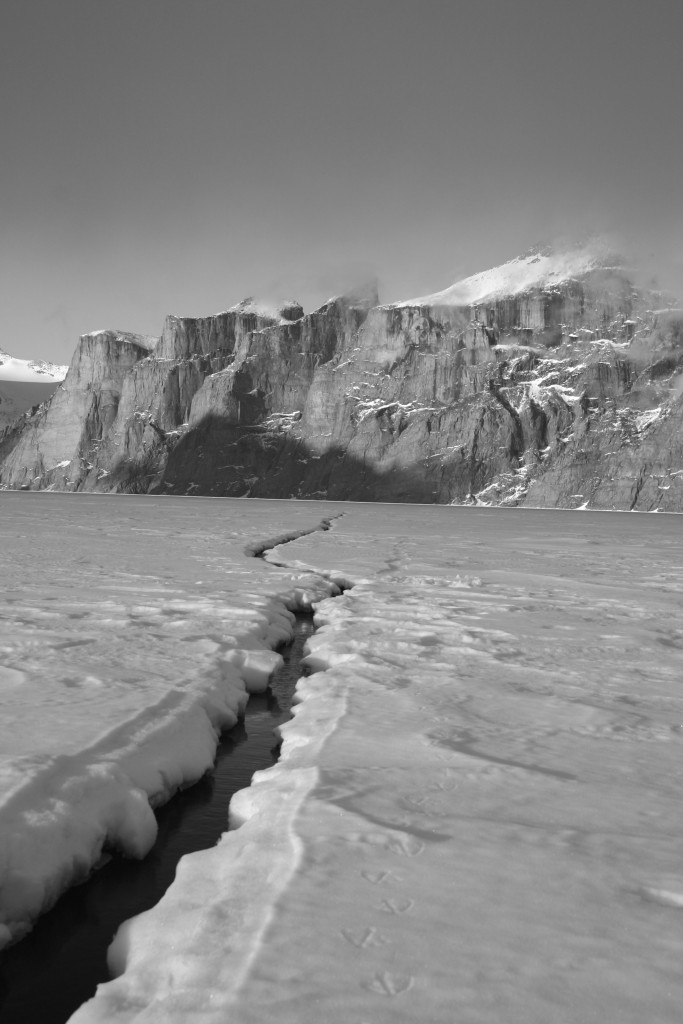
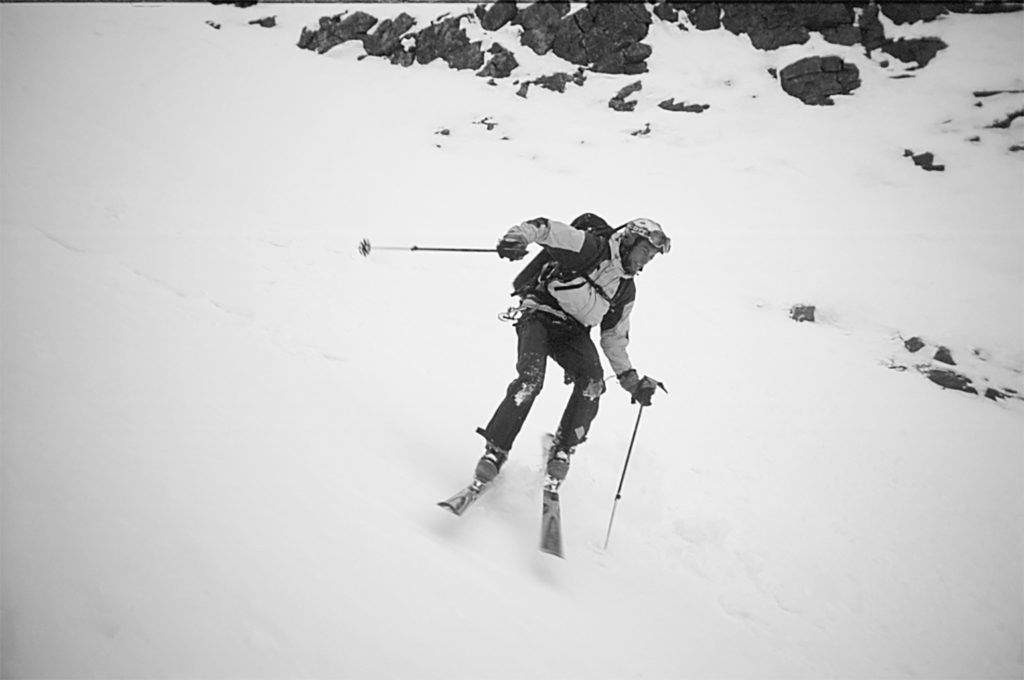
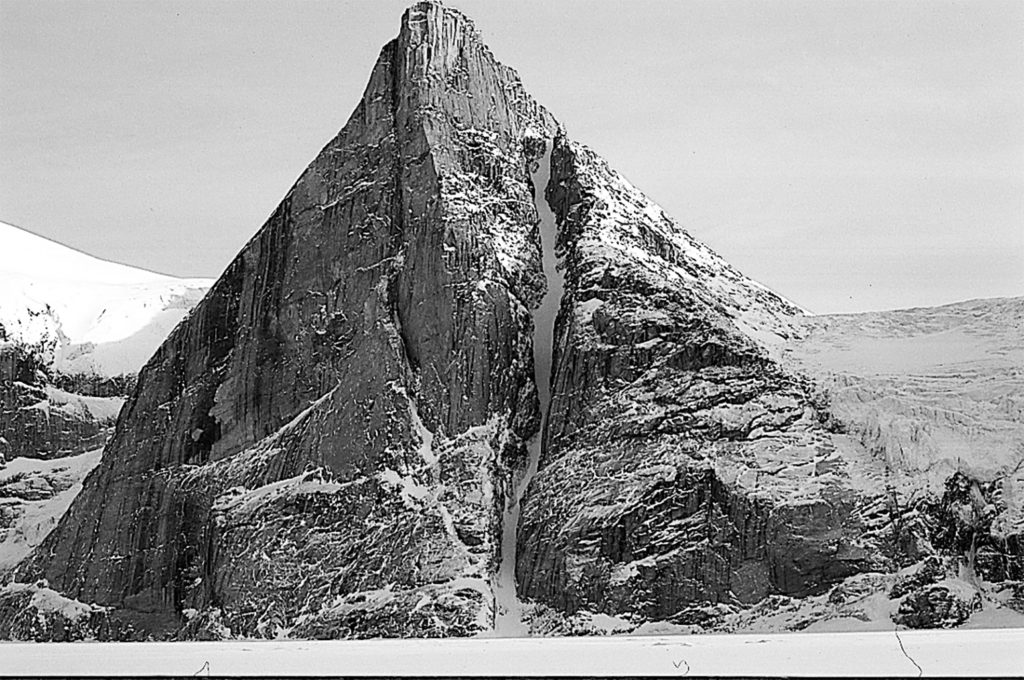

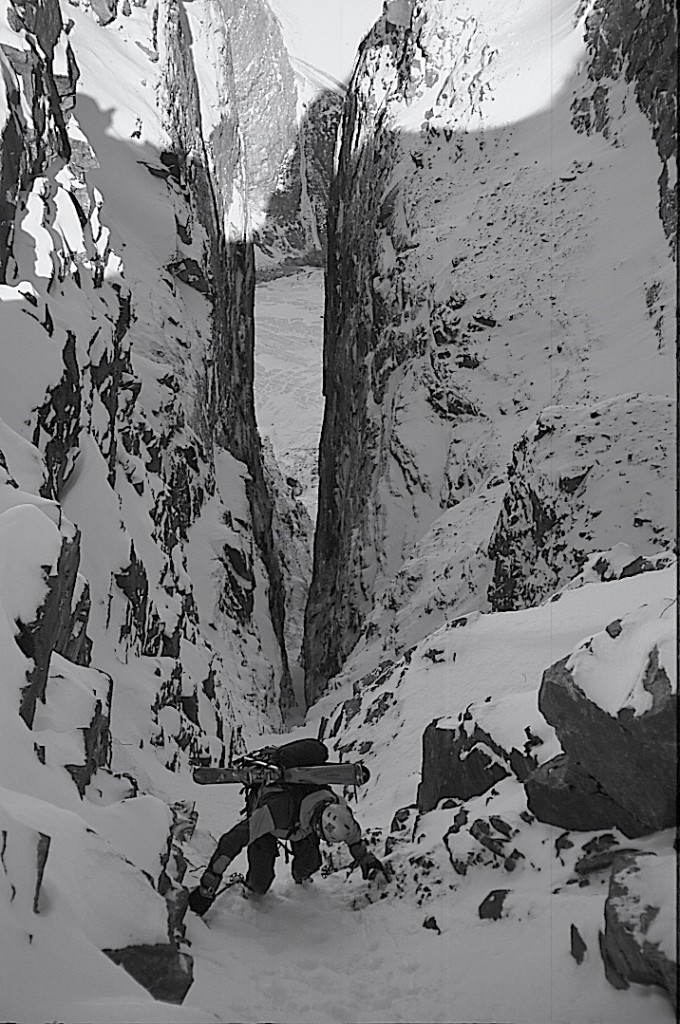
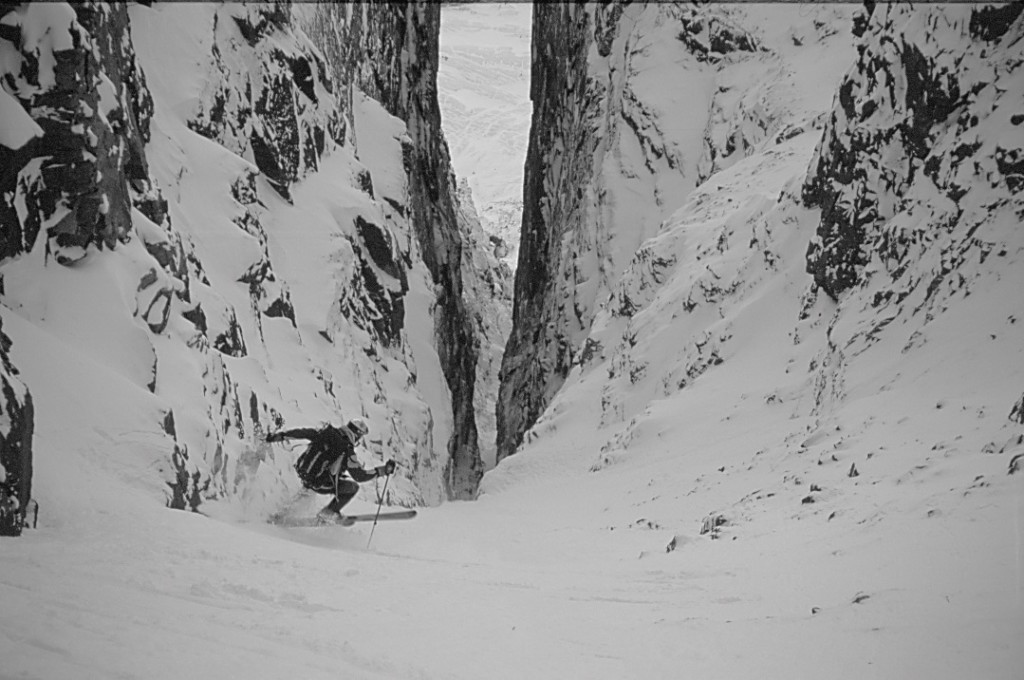

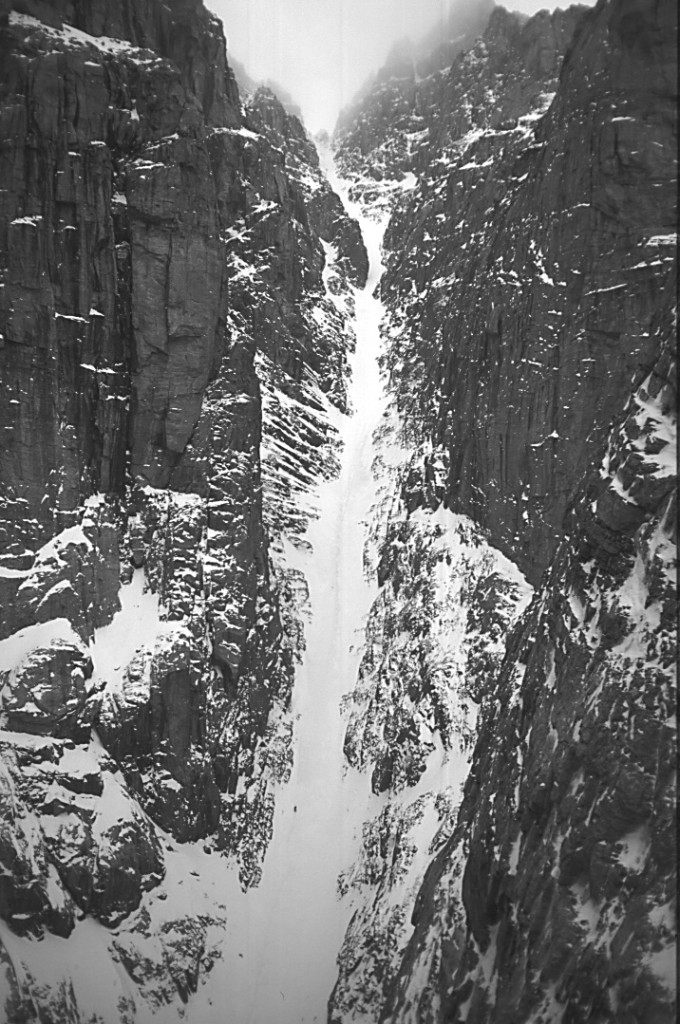
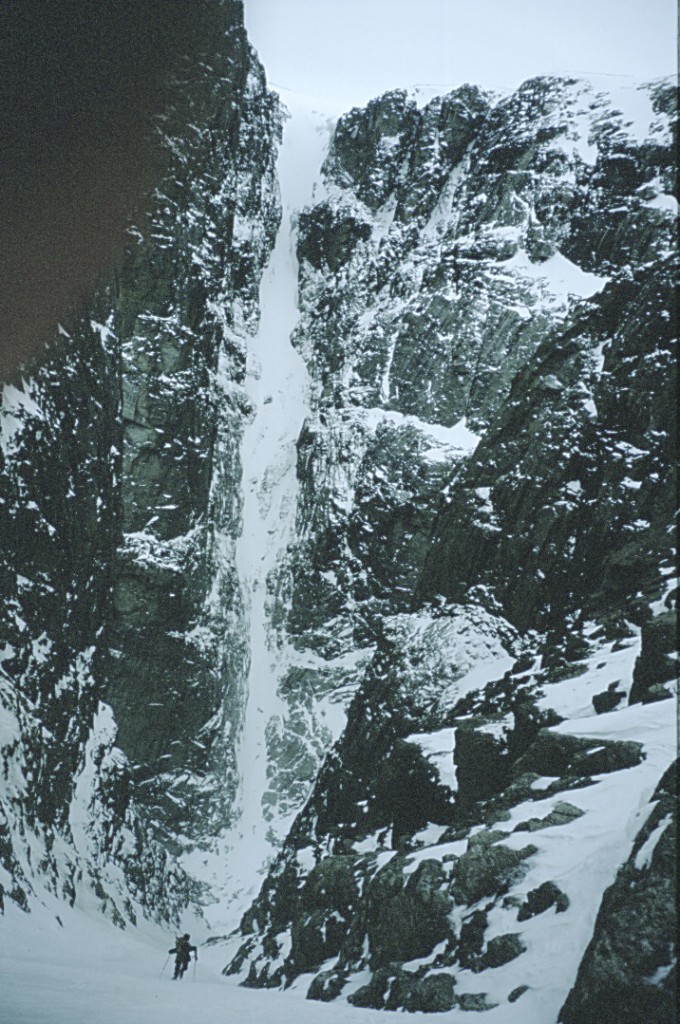
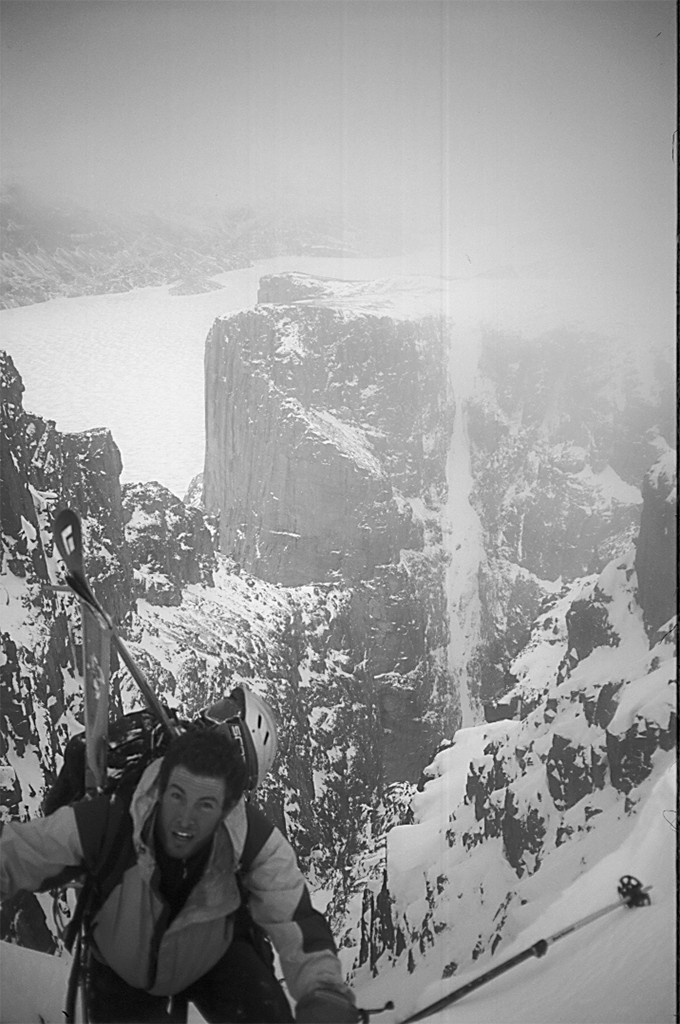

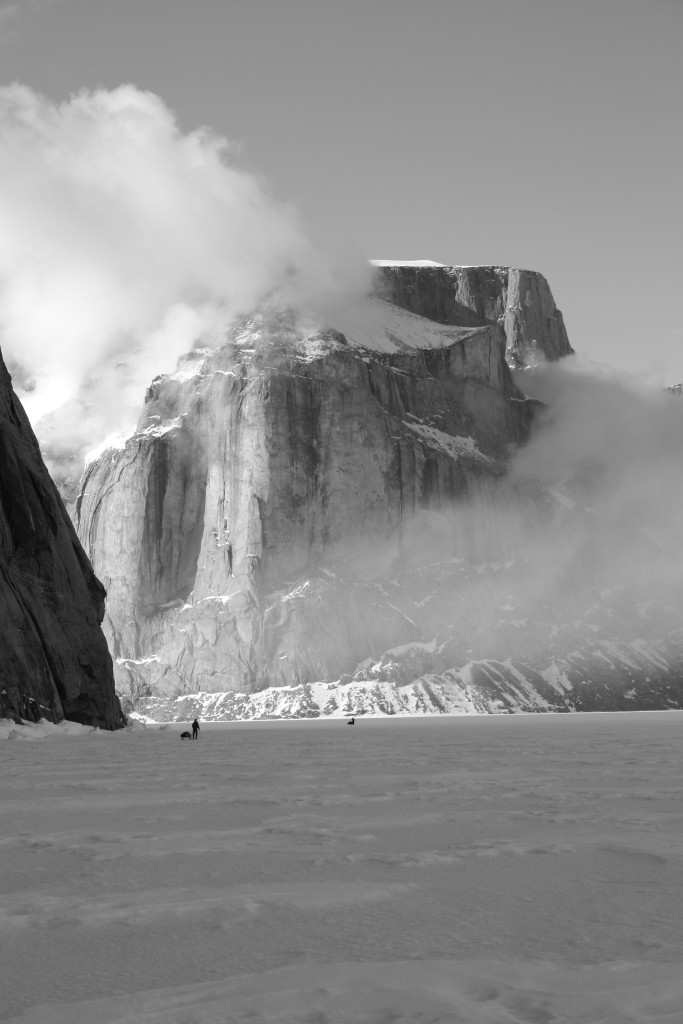
1 comment